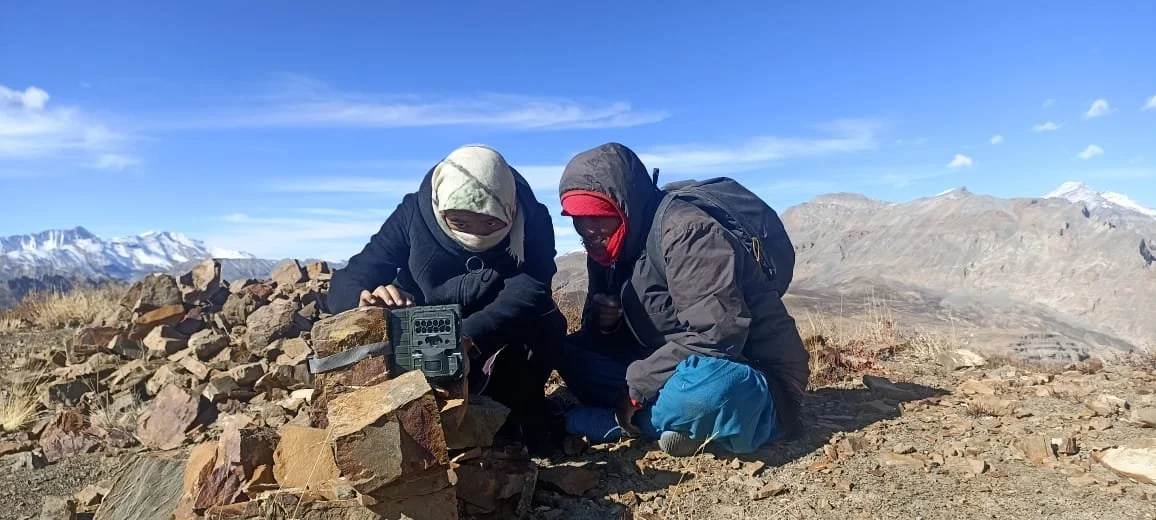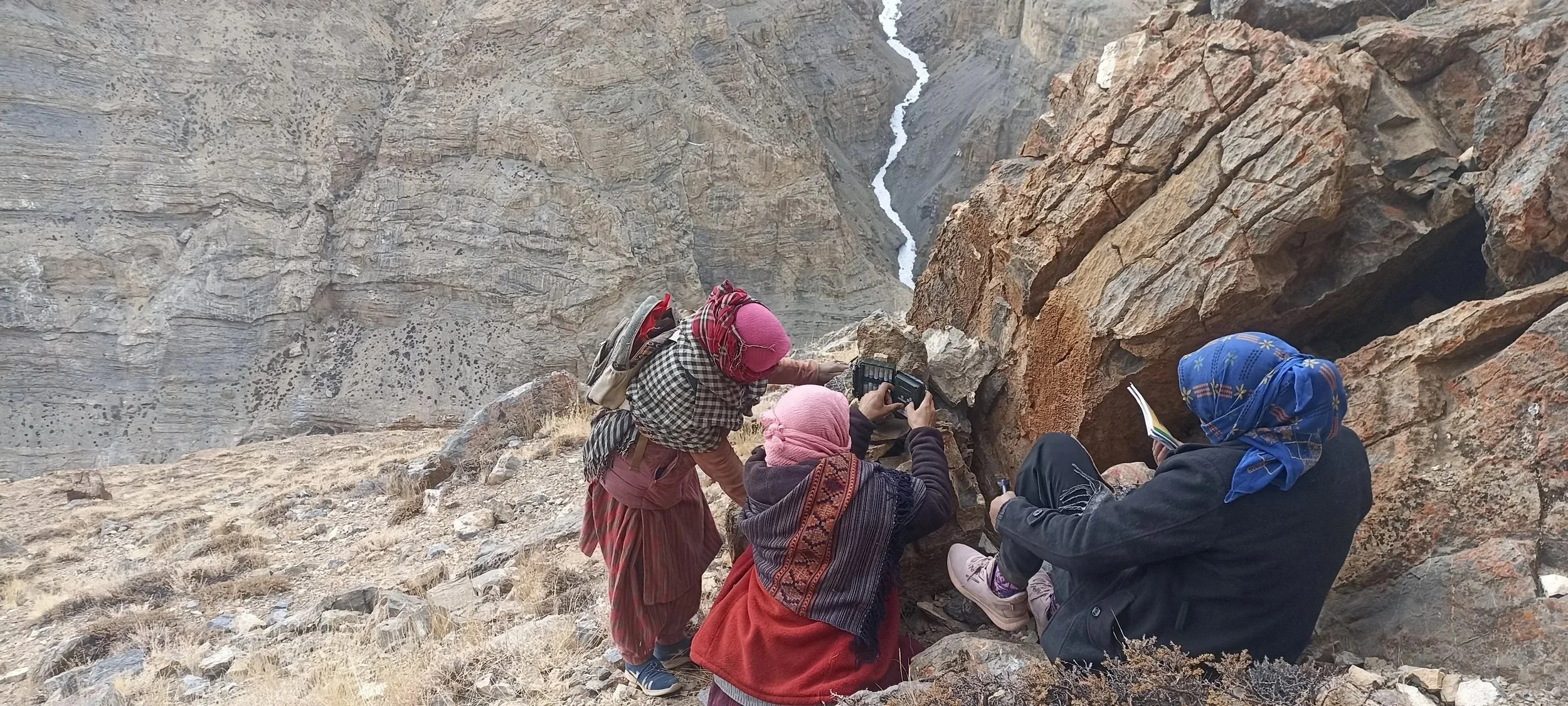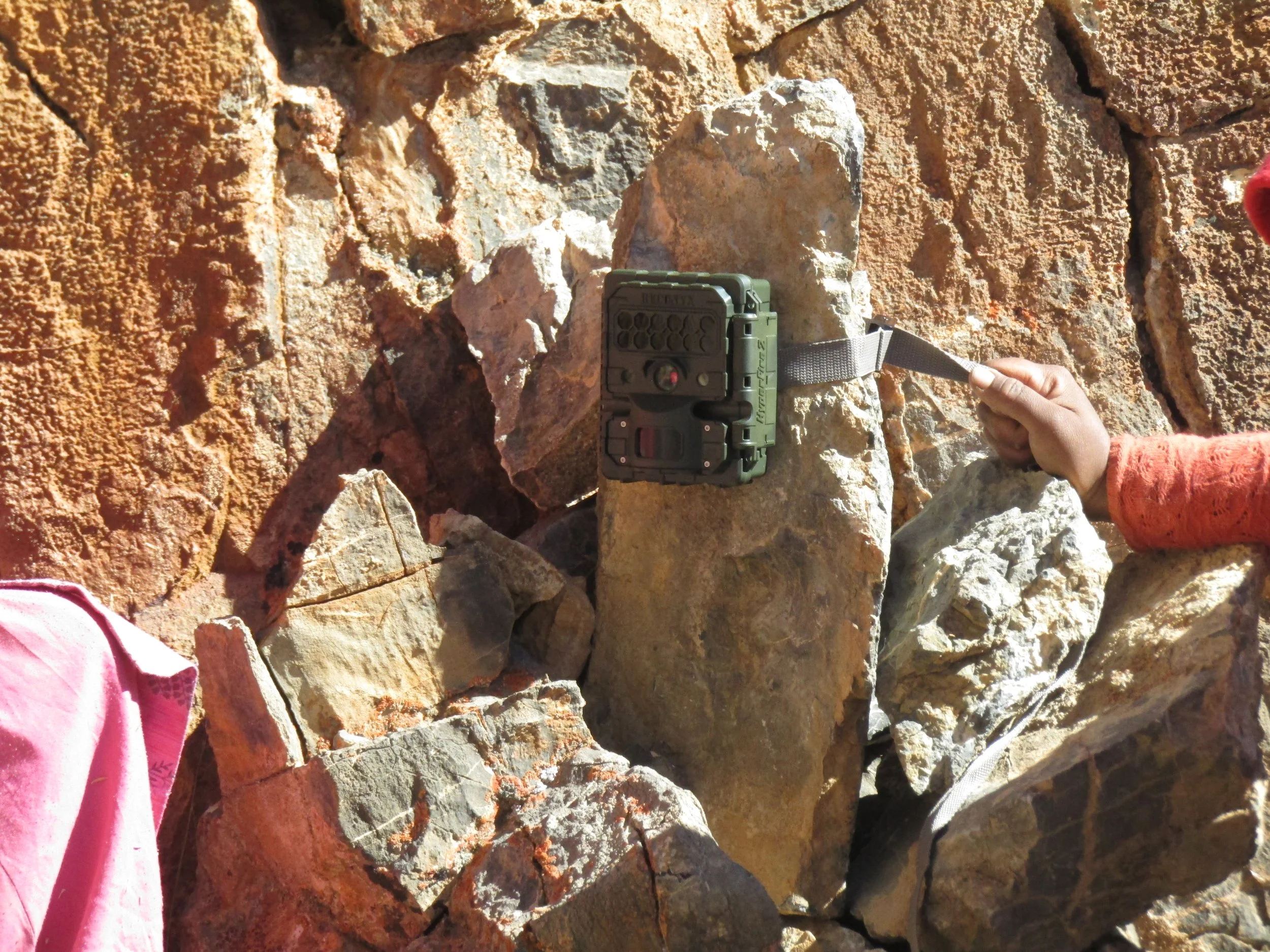
Camera Trapping
Eleven women from Kibber village of Spiti Valley have learnt to monitor wildlife found in their traditional pastures during winters by using camera traps. Camera trapping is a non‑invasive method that captures animals as they move through the landscape, building an understanding of species diversity, population size, and behaviour without disturbing the wildlife.
The team of women place camera traps in ten locations spread across 144 sq km of snow leopard landscape at the start of November each year during the onset of winter, when animals may exhibit different behaviours or utilise different areas compared to other seasons. Using snow‑leopard micro‑habitat clues—scat, scent marks, scrape marks—the team identifies ten strategic spots such as cliff faces and ridgelines where cats are most likely to travel. The women trek back to each site, verify that cameras are still functioning, and swap out batteries or memory cards as needed. By March, as the snow begins to melt, the team collects the cameras and prepares for the next step of image processing.
In just two years of operation, the project has already produced a valuable archive of winter wildlife activity—documenting snow leopards, ibex, blue sheep, and a host of smaller mammals using the landscape. These images are now feeding into long‑term studies that track population trends, habitat use, and seasonal behaviour shifts.
Women placing and testing the camera traps in Kibber.









